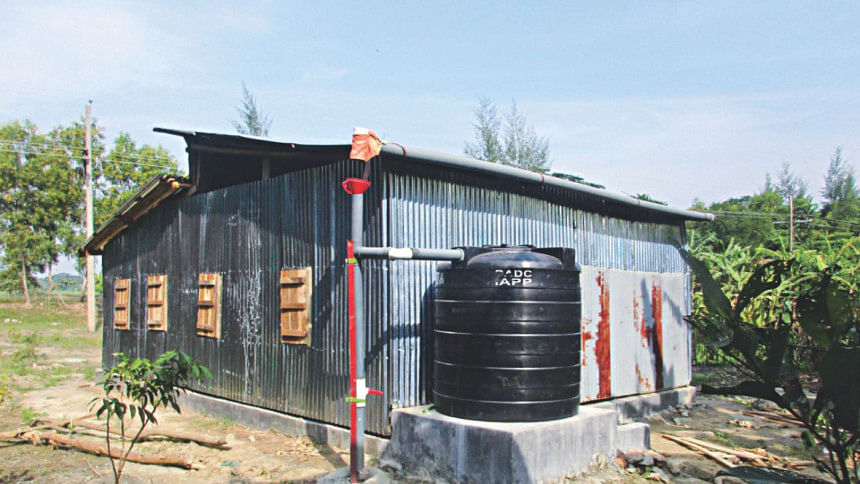Rainwater storage alleviates Patuakhali water crisis

In the coastal areas of Patuakhali's Kalapara upazila, to find fresh water is often a struggle.
The underground water table has fallen over recent years. The salinity problem has increased. Many tube wells deliver either saline water or none at all.
Now, encouraged by a government project, many families are using rainwater storage as a partial solution.
“To collect drinking water is usually a big chore,” says Okhaichin, a local Rakhine housewife from Kuakata.
“We have to walk quite far to find a suitable tube well. Rainwater on the other hand is also free, and to use it for drinking and household activities is convenient.”
“We are certainly enjoying the benefit of storing rainwater,” says another Kuakata resident Md Basir Ahmed.
“It's a good idea, but doesn't help as much during the dry season. Rainfall in the dry season in recent years seems to have reduced.”
The Bangladesh Agriculture Development Corporation implemented the World-Bank-funded project to promote rainwater storage, a project that ran for five years from 2011.
A total of 919 water tanks were then distributed and installed across 12 villages, to service 3,676 households, at a cost of Tk 8.88 crore.
In Latachaplee union adjacent to Kuakata it is common to see the telltale plastic pipes connecting the tin rooftops of houses with the storage tanks, each with a 2,000-litre capacity.
Having seen the benefits of rainwater storage, many locals hope such a project can be repeated.
Expanded storage capacity, they say, would help to ensure fresh water supplies are more than enough to last right through the dry season.

 For all latest news, follow The Daily Star's Google News channel.
For all latest news, follow The Daily Star's Google News channel. 



Comments